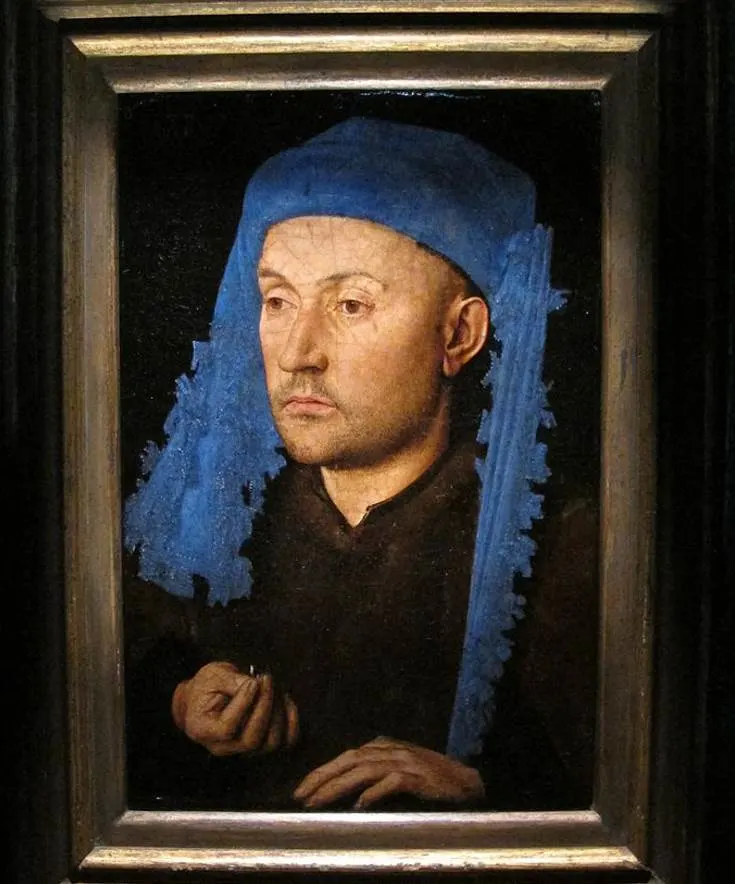Even though the most famous painting by Jan van Eyck is a monumental work called the Ghent Altarpiece, he also created several small and delicate little works.
One of these depicts a man wearing a blue hat and is therefore referred to as “Portrait of a Man with a Blue Chaperon.”
Let’s take a closer look at some interesting facts about this work by the Early Netherlandish artist Jan van Eyck (1390-1441).
1. The painting was created around the year 1430
Portrait of a Man with a Blue Chaperon is a blue painting created by Jan van Eyck, one of the most famous Renaissance artists of the northern part of Europe. His works were nothing short of revolutionary and the level of detail he included was incredible.
The man wears a blue hat, a type of headdress that was quite popular during the early 15th century. Van Eyck didn’t date the painting so it’s unclear when it was completed.
because this type of headdress went out of fashion around the mid-1430s, it was certainly painted before that, probably around the year 1430.
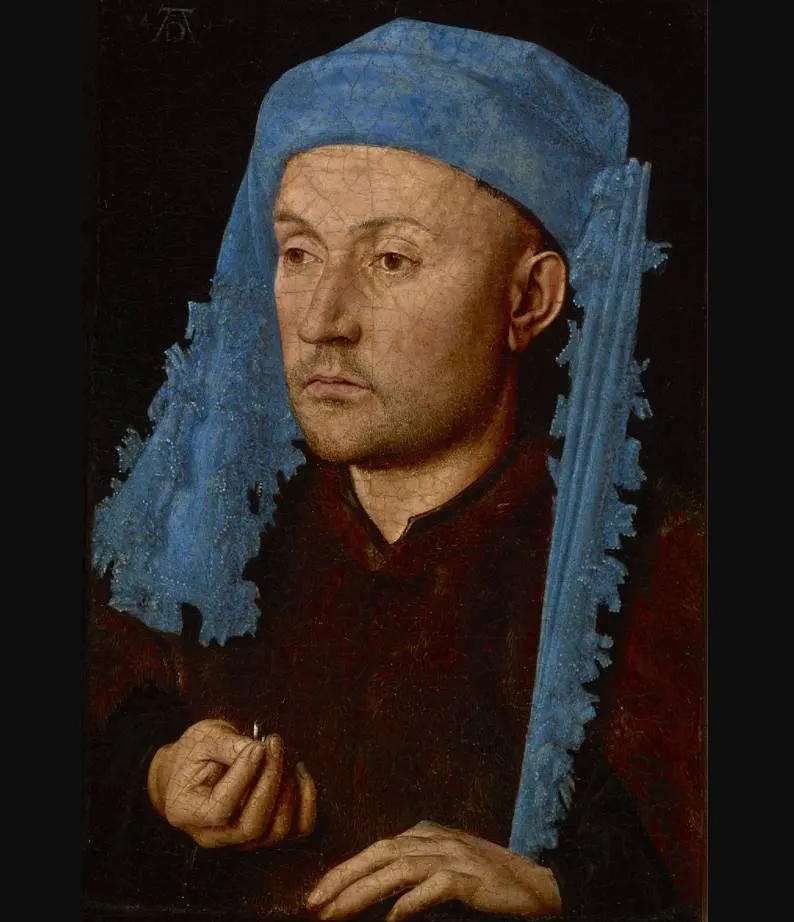
2. The identity of the man remains unknown until today
The painting was not dated and didn’t receive an official title, something common with most works by the Flemish Primitives. This also means that the identity of the depicted man remains unknown.
Because of this notion, the painting has gone by several names throughout its history, including “Portrait of a Man with a Blue Hood,” “Portrait of a Jeweller,” and “Man with a Ring.”
3. The man holds a ring which might hint at his profession
The best guess that we can make based on some things we know is that the man was most certainly a member of the upper class. Jan van Eyck was working in Bruges at the time, the center of commerce in the northern part of Europe.

The man is holding a ring which might indicate that he was either a jeweler or a goldsmith. This assumption can’t be verified by facts, though, so it remains unclear whether or not this was the case.
It’s also possible that the ring is a sign of an upcoming wedding. This doubt is the main reason why modern art historians have referred to the painting as “Portrait of a Man with a Blue Chaperon” or variations of that.
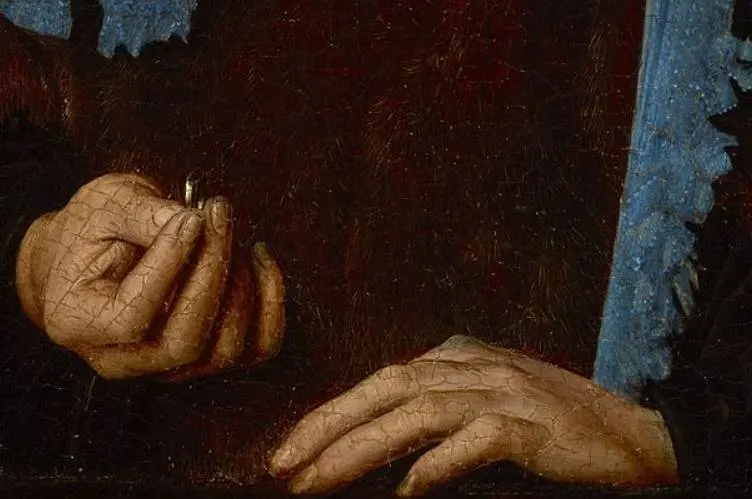
4. The man is depicted in a completely unidealized manner
One of the most remarkable facts about this painting is that it depicts the man completely unidealized, something that was unthinkable in medieval art.
The naturalistic way of depicting people was the essence of the Renaissance and Jan van Eyck was a pioneer of this art movement in the northern part of Europe.
The light source of this painting predominantly comes from the left and emphasizes the fact that the man is unshaven. Even though this might sound rather strange in the right of a portrait sent to a potential wedding candidate who might not have met the man yet, it would have made the painting credible.
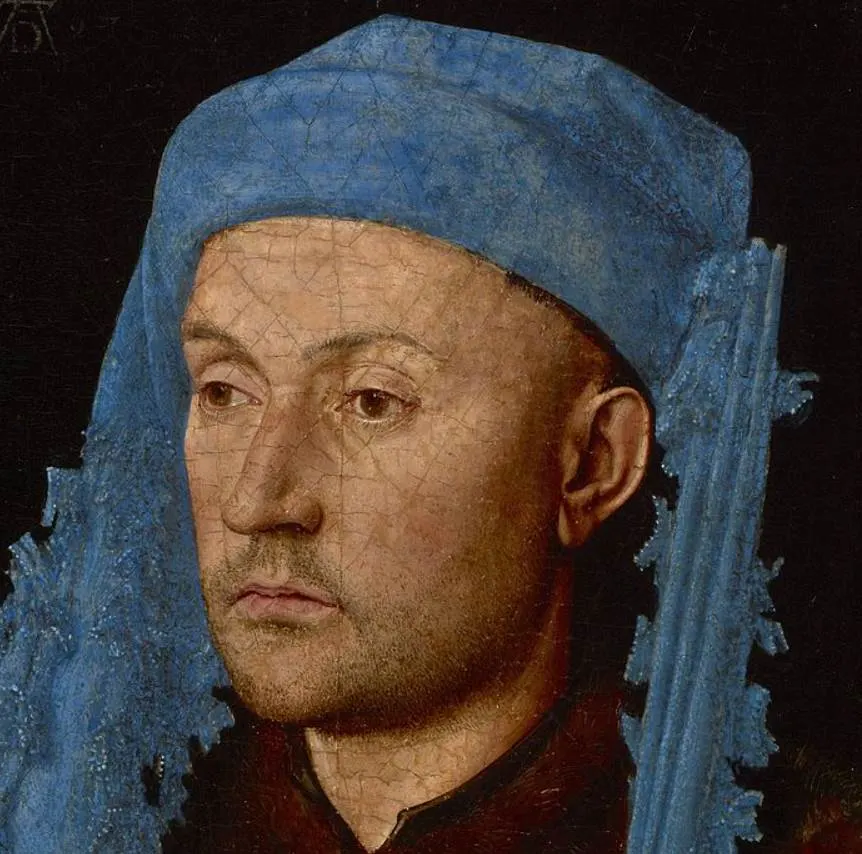
5. The painting is on display at a historic museum in Transylvania
Nothing is known about the provenance of the painting until it came in the possession of Samuel von Brukenthal (1721-1803), the Habsburg governor of Transylvania. This is a historic region which is now situated in central Romania.
The governor established his collection around 1790 and put it on display at his residence, the Brukenthal Palace in Hermannstadt, modern-day Sibiu. This palace was transformed into a museum in 1817 which makes it the oldest museum in Romania until today.
The painting was moved to the National Museum of Art of Romania in Bucharest while the Communists were in charge in the 20th century. It wasn’t returned to the Brukenthal Museum until 2006, the year that Sibiu was the Cultural Capital of Europe.
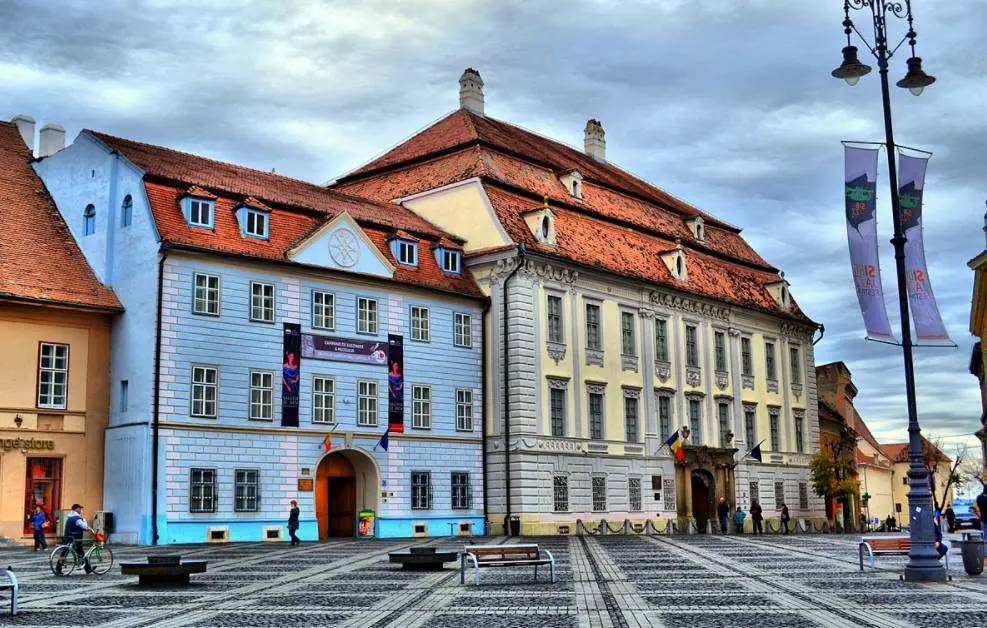
More interesting facts about the Portrait of a Man with a Blue Chaperon
6. The Ghent Altarpiece is a monumental work of art and one of the world’s ultimate treasures, measuring 3.5 x 4.6 meters (11.48 x 15.09 feet).
The Portrait of a Man with a Blue Chaperon, on the other hand, is an extremely small work of art with dimensions of just 22.5 × 16.6 centimeters (8.9 × 6.5 inches). Quite a contrast, don’t you think?
7. Regardless of the size of the painting, Jan van Eyck didn’t hold back when it comes to including details and illusionistic elements. Apart from the unidealized depiction of the man, it also appears as if his right hand, the one holding the ring, is being projected out of the painting.
His left hand is seemingly resting on the frame of the painting but this looks a bit awkward because the original frame e has been lost.
8. It’s not the only time that Jan van Eyck painted a similar headdress. He also painted a red version in “Portrait of a Man” (1433), which is presumably a self-portrait.
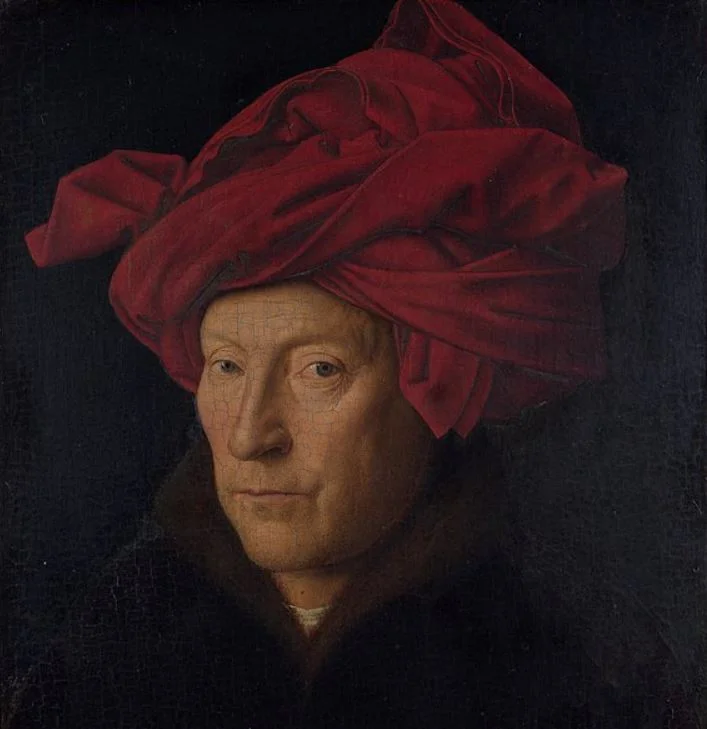
One that is not so clear can be seen in the distance in “Madonna of Chancellor Rolin” (1435) another presumed self-portrait together with his assistant.
9. One of the most remarkable facts about Portrait of a Man with a Blue Chaperon is that the signature “AD” is located near the top. This is a reference to “Albrecht Dürer” (1471-1528), a painter of the German Renaissance.
This resulted in the work being dated 1492 until the signature was identified as being fake in the late 19th century. An infrared study conducted in 1991 concluded that the work is 100% certain by the hand of van Eyck. This was based on the painting technique and handling of oil by the artist.
10. The blue headdress of the man was painted using lapis lazuli, a pigment derived from a deep-blue metamorphic rock. This type of pigment was extremely expensive which is another indication that the depicted man was most probably well off during his lifetime.
Who is the man wearing a blue hood? Unfortunately, It’s almost certain that this mystery will never be solved.
